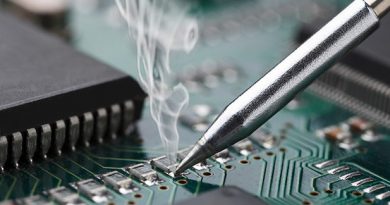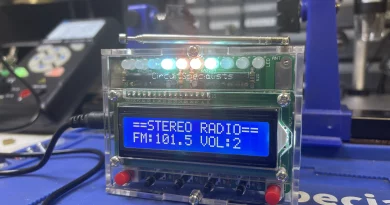Selecting a Soldering Iron: Temperature, Wattage, and Tip
There are a plethora of soldering irons available, and choosing the appropriate iron depends primarily on the way you’ll use it as well as the type of projects you intend to do. When you’re searching for a soldering iron the three most important considerations are temperature, wattage, and the soldering iron tip (note: most soldering irons have interchangeable tips, thus enabling you to switch to another tip suited for your current project).
Temperature
The majority of soldering irons have three basic temperature designs: 1) no temperature control designs, which are usually the least expensive and suitable for household soldering jobs, plug in and are ready to go after they’ve warmed up; 2) temperature-controlled soldering irons allow you to be sure that the soldering iron tip maintains the right temperature, but they are more expensive than basic soldering irons; and 3) soldering stations — which consist of a benchtop control unit and a soldering iron specifically designed for the unit, and which are the most expensive type of soldering iron — typically offer digital temperature readouts, adjustable soldering iron temperature, and a number of other features.
If you are a professional or you plan to do a lot of soldering, consider a soldering station first.
Most modern soldering irons are electric, but electric soldering irons have a limited range as a result of the cord providing power. If your project is far from an outlet, you’ll need an extension cord or, alternatively, you can opt for a rechargeable cordless soldering iron that you can use just about anywhere. Cordless soldering irons are great for precision work.
Wattage
You also need to take wattage into account. Your typical soldering iron is rated between fifteen and twenty-five watts. Higher wattage soldering iron have more power, thus making them better suited for heavy-duty projects than their low-wattage counterparts. Higher wattage doesn’t mean that the iron provides more heat; rather, high-wattage soldering irons have more power on reserve, enabling them to heat for longer periods.
(You can learn more about choosing the right soldering iron tip in one of our previous blogs, “Choosing a Soldering Iron Tip.”)
When you are shopping for a new soldering iron keep these recommendations in mind in order to get the most bang for your buck — remember: temperature, wattage, and soldering iron tip.

